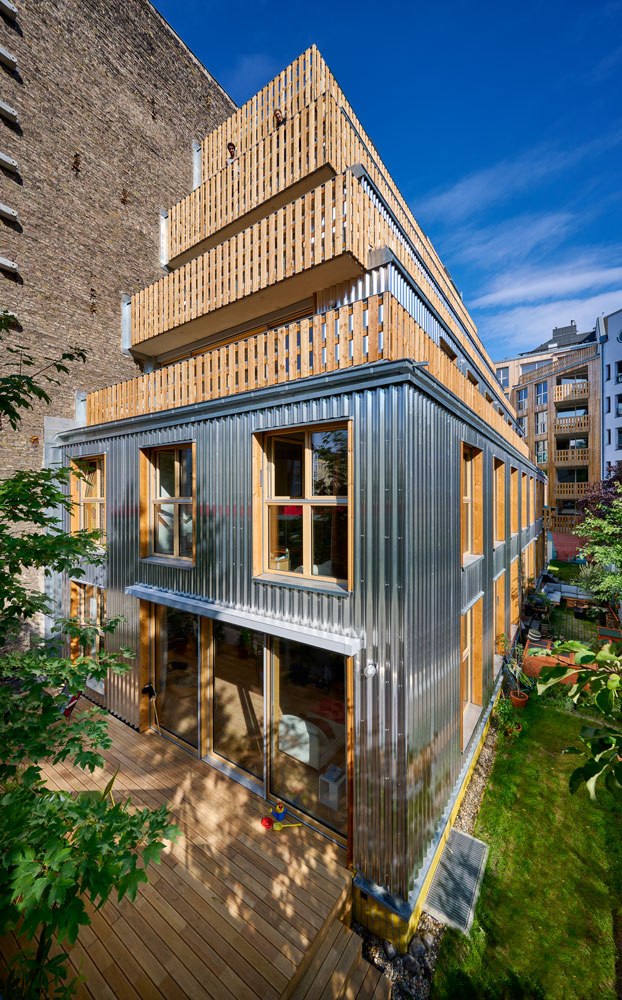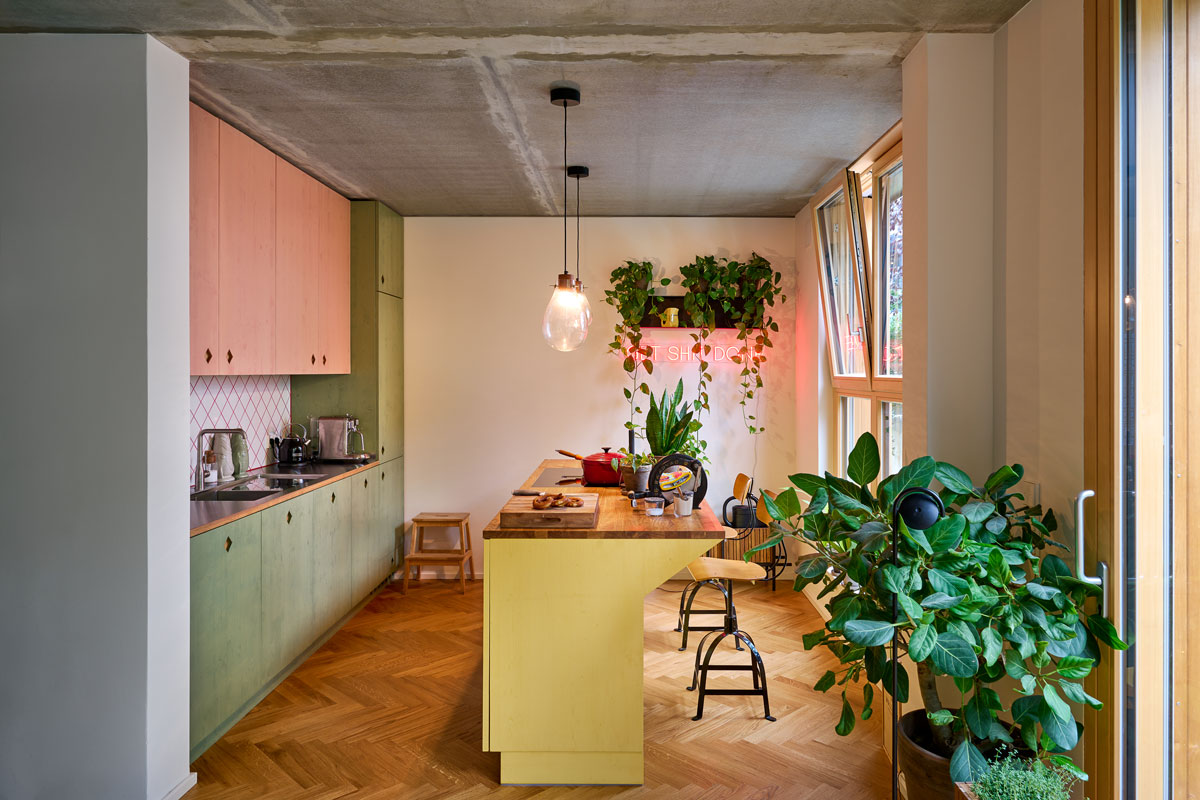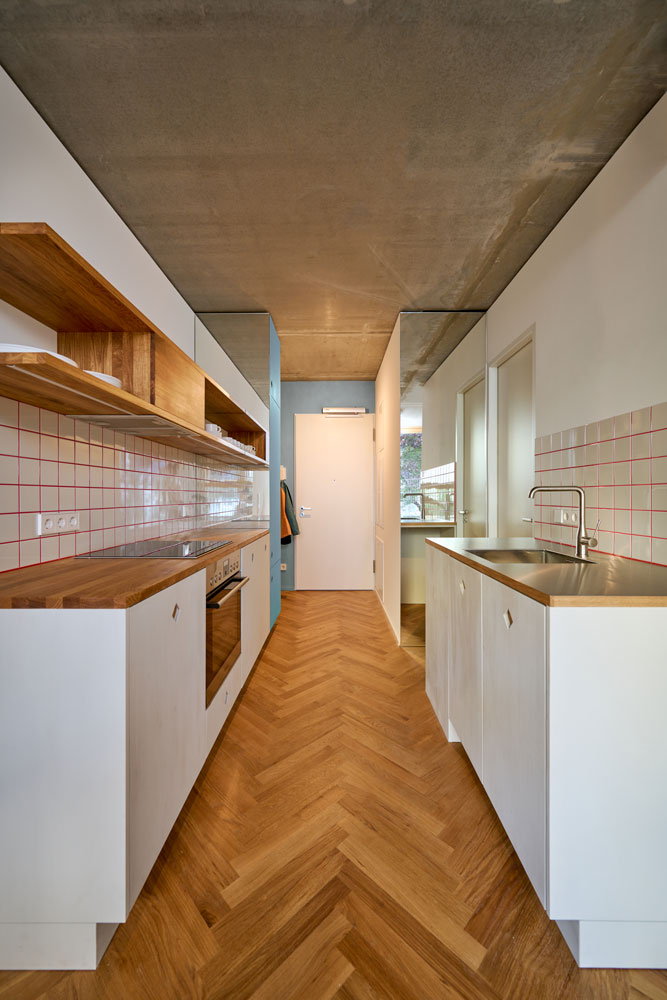Institut
für
unnachahmliche,unbeschwerte,unkonventionelle,ungezogene,umfassende,unfassbare,umweltbewusste,unglaubliche,ungewöhnliche,unterhaltsame,unschädliche,unwiderstehliche,ultrageschmeidige,unkonventionelle,urige,unbeschreibliche,umwerfende,unvergleichliche,unerschütterliche,unwirtschaftliche,unkomplizierte,unverbesserliche,urbane,unverbrauchte,unerwartete
Baukunst
Baugruppen
are a popular approach in Berlin when it comes to creating new living space. Several parties join forces, pooling their common interests and finances, to build one or more houses. Baugruppen combine the advantages of a condo (privately-owned units) with those of a housing cooperative (shared-ownership of communal spaces). The beauty of this model? The future owners are involved in the process from day one and can take an active role in the project’s concept and design.
A glance at one of the garden house’s first floor apartments at nightfall highlights the beautiful transition from reflection to revelation, visible through the large wooden
lift-and-slide door systems
featured in all the apartments.










































